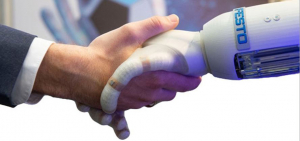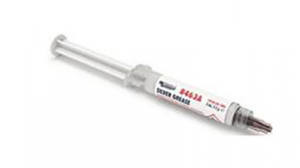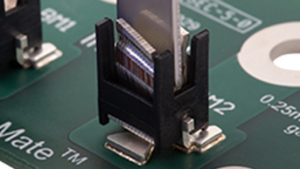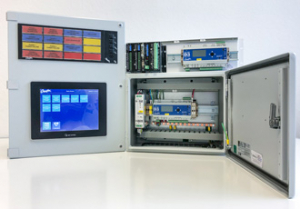Electrical Equipment for Hazardous Areas: Understanding the X-Factor
13th August 2008
Source:
Cooper Crouse-Hinds (UK) Ltd
When it comes to sourcing electrical equipment for hazardous areas, end users and contractors have to ensure that apparatus not only meets the appropriate Health & Safety standards, but they also have to make the correct purchasing decisions, based on the cost of ownership of a product, not simply based on price of the apparatus alone. This means considering the related costs of the product throughout its entire lifecycle, including the cost of installation, maintenance, service and repair. Furthermore, the cost of a non-productive shut down in hazardous areas in order to service/repair the failed apparatus, must also be considered.
When it comes to sourcing electrical equipment for hazardous areas, end users and contractors have to ensure that apparatus not only meets the appropriate Health & Safety standards, but they also have to make the correct purchasing decisions, based on the cost of ownership of a product, not simply based on price of the apparatus alone. This means considering the related costs of the product throughout its entire lifecycle, including the cost of installation, maintenance, service and repair. Furthermore, the cost of a non-productive shut down in hazardous areas in order to service/repair the failed apparatus, must also be considered.
In hazardous area environments, these types of purchasing decisions are further complicated by European and Interna-tional Health & Safety Standards, which allow electrical equipment to be marked with an ‘X’ at the end of the certificate number.
In EN 60079-0 You will find following definition for the ‘X’:
symbol X
symbol used to denote specific conditions of use
NOTE: The symbol ‘X’ is used to provide a means of identifying that essential information for the installation, use, and maintenance of the equipment is contained within the certificate.
This ‘X’ denotes that the equipment is subject to ‘specific conditions for safe use’, which is specified in the schedule to the certificate. This ‘X’ may denote enhancements but can also denote limitations. This means the owner of the equipment must be aware of the meaning of the ‘X’ on the equipment in use . It could mean that he must carry out risk assessments on the equipment.
It is therefore crucial that engineers understand the subtle technical differences between electrical products from different manufacturers. Although different products may both carry the same ‘ATEX classification’, the customer must consider the possible ‘hidden’ costs of the ‘X’.
As an example, take explosion-protected control stations or overhead fluorescent lighting for hazardous areas. As long as the lighting unit carries the required ‘ATEX classification’ and test certification, the end user customer may not be duly concerned with any ‘X’ marks on the certificate. However, the ‘X’ in this particular example could denote that the control station or light fitting can only be installed where there is a low risk of mechanical damage. ‘Low risk of mechanical damage’ is open to the customer’s own interpretation, but may mean that the unit cannot be installed in certain production areas, handling or lifting bays. The ‘X’ on a control station or light fitting then denotes that the housing is rated below the 7Nm impact test required as standard for equipment used in hazardous areas. This is rather like buying a car without airbags and being told by the seller that you can only have low speed impacts.
Another example could be a limitation in the ambient temperature. Instead of the standard range
(-20°C up to +40°C) the equipment may be limited for use in an ambient range between 0°C up to +40°C. This means that the equipment is restricted to indoor use only. On the other hand, the same ‘X’ could also refer to an increased ambient temperature range.
The ‘X’ may also have other special conditions that increase the cost of ownership for the end user. For example, special installation instructions and maintenance procedures may be necessary. This might mean that self-tapping screws are supplied with the lighting to lock the diffuser clamps. These must be fitted to maintain the certification. If the customer is installing hundreds of lights through a plant, the additional time and cost of installation in this way can be significant.
Apart from the possible restrictions created by an ‘X’ in the certificate, inspection and maintenance are also key consid-erations when purchasing light fittings for hazardous environments. Whereas all Cooper Crouse-Hinds light fittings are designed specifically for hazardous areas, so that mounting and fixings never interfere with protection ratings, other light fitting manufacturers have moved from being suppliers of lighting for general industrial use to ‘explosion-protected’ ver-sions. Often, these suppliers have to include special maintenance conditions. For example, the end user may have to inspect the light fitting every 12 months, resulting in significant maintenance costs.
Cooper Crouse-Hinds provides a comprehensive range of explosion-protected electrical equipment, including fluorescent light fittings, emergency lighting, switches, terminal boxes, control stations, portable lamps, connectors and plugs.
In hazardous area environments, these types of purchasing decisions are further complicated by European and Interna-tional Health & Safety Standards, which allow electrical equipment to be marked with an ‘X’ at the end of the certificate number.
In EN 60079-0 You will find following definition for the ‘X’:
symbol X
symbol used to denote specific conditions of use
NOTE: The symbol ‘X’ is used to provide a means of identifying that essential information for the installation, use, and maintenance of the equipment is contained within the certificate.
This ‘X’ denotes that the equipment is subject to ‘specific conditions for safe use’, which is specified in the schedule to the certificate. This ‘X’ may denote enhancements but can also denote limitations. This means the owner of the equipment must be aware of the meaning of the ‘X’ on the equipment in use . It could mean that he must carry out risk assessments on the equipment.
It is therefore crucial that engineers understand the subtle technical differences between electrical products from different manufacturers. Although different products may both carry the same ‘ATEX classification’, the customer must consider the possible ‘hidden’ costs of the ‘X’.
As an example, take explosion-protected control stations or overhead fluorescent lighting for hazardous areas. As long as the lighting unit carries the required ‘ATEX classification’ and test certification, the end user customer may not be duly concerned with any ‘X’ marks on the certificate. However, the ‘X’ in this particular example could denote that the control station or light fitting can only be installed where there is a low risk of mechanical damage. ‘Low risk of mechanical damage’ is open to the customer’s own interpretation, but may mean that the unit cannot be installed in certain production areas, handling or lifting bays. The ‘X’ on a control station or light fitting then denotes that the housing is rated below the 7Nm impact test required as standard for equipment used in hazardous areas. This is rather like buying a car without airbags and being told by the seller that you can only have low speed impacts.
Another example could be a limitation in the ambient temperature. Instead of the standard range
(-20°C up to +40°C) the equipment may be limited for use in an ambient range between 0°C up to +40°C. This means that the equipment is restricted to indoor use only. On the other hand, the same ‘X’ could also refer to an increased ambient temperature range.
The ‘X’ may also have other special conditions that increase the cost of ownership for the end user. For example, special installation instructions and maintenance procedures may be necessary. This might mean that self-tapping screws are supplied with the lighting to lock the diffuser clamps. These must be fitted to maintain the certification. If the customer is installing hundreds of lights through a plant, the additional time and cost of installation in this way can be significant.
Apart from the possible restrictions created by an ‘X’ in the certificate, inspection and maintenance are also key consid-erations when purchasing light fittings for hazardous environments. Whereas all Cooper Crouse-Hinds light fittings are designed specifically for hazardous areas, so that mounting and fixings never interfere with protection ratings, other light fitting manufacturers have moved from being suppliers of lighting for general industrial use to ‘explosion-protected’ ver-sions. Often, these suppliers have to include special maintenance conditions. For example, the end user may have to inspect the light fitting every 12 months, resulting in significant maintenance costs.
Cooper Crouse-Hinds provides a comprehensive range of explosion-protected electrical equipment, including fluorescent light fittings, emergency lighting, switches, terminal boxes, control stations, portable lamps, connectors and plugs.
Similar articles
More from Cooper Crouse-Hinds (UK) Ltd
- Explosion-proof enclosures simplify maintenance of fire and gas detection systems 28th May 2009
- Explosion-proof fluorescent light fittings and switches enable safe paint production 6th February 2009
- Hazardous Area Equipment Protects Workers from Harmful Dust 14th August 2008
- Connectors enable installation and maintenance of electrical equipment in hazardous areas without a ‘Hot Work Permit’ 14th August 2008
Product Centre Updates
2024 World Battery & Energy Storage Industry Expo (WBE)
8th August 2024
China 1st and 2nd Floor, Area A, China Import and Export Fair Complex












Write a comment
No comments